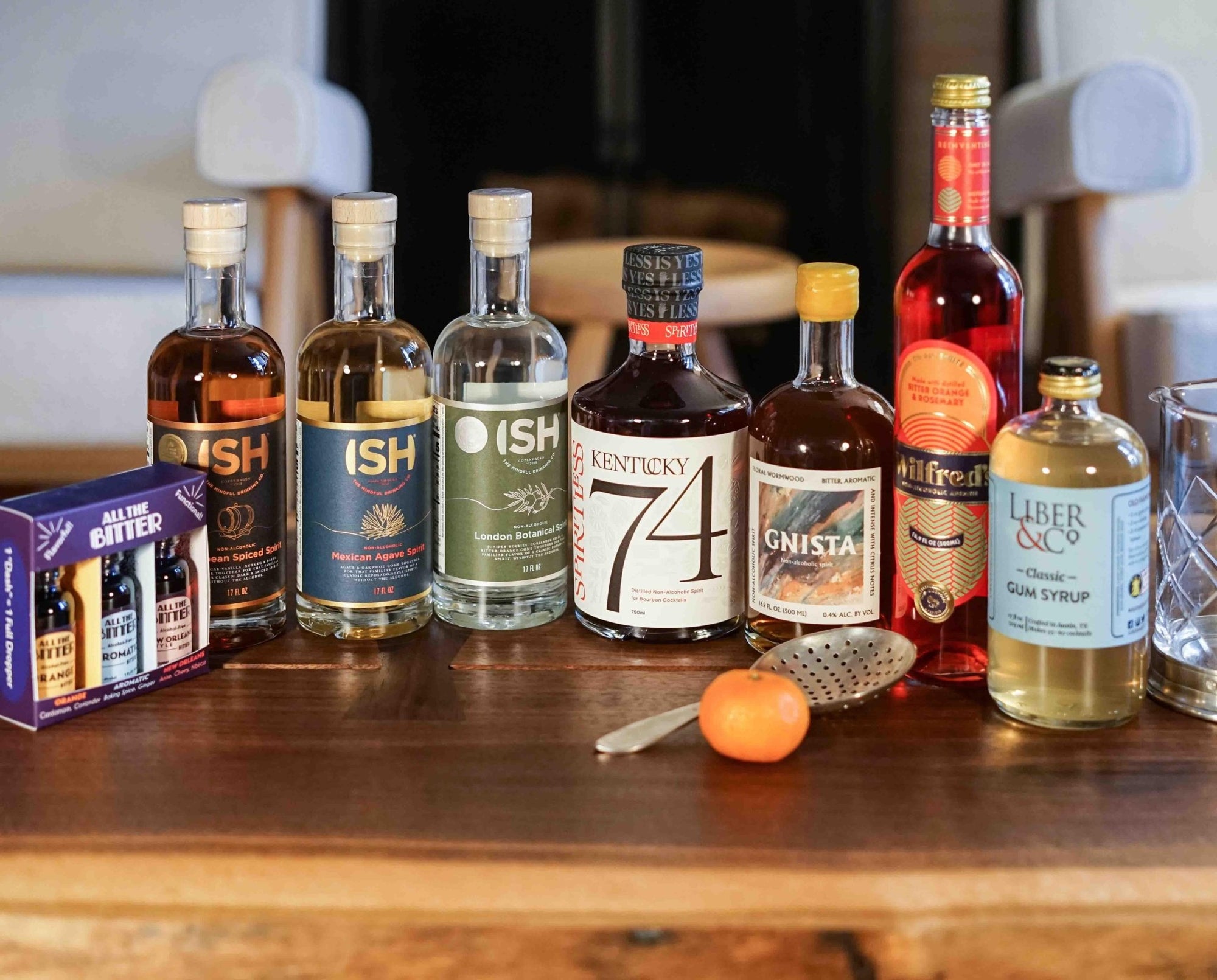Should you drink non-alcoholic spirits neat?

Your package has arrived, you've opened the box, and you finally have your highly anticipated bottle of non-alcoholic spirits in your hands. Excited and impatient, maybe you took a slug right out of the bottle, only to find what was described as non-alcoholic gin or tequila didn't taste how you thought it would. At all.
Don't get discouraged! We're here to help you understand what non-alcoholic spirits are, how they are made, and, most importantly, the best way to enjoy them.
Expecting a neat non-alcoholic bourbon to taste like a pour of 20-year Pappy Van Winkle is a recipe for disappointment. Not because the makers of non-alcoholic spirits failed to make their products taste accurate straight out of the bottle, but because that wasn't their intention. Non-alc spirits don't taste like the high-test stuff because they're formulated to be used in cocktails.
Think of them like spices: they taste great mixed into recipes, but, as anyone who has tried the cinnamon challenge will tell you, they can be too intense on their own.
What are non-alcoholic spirits, anyway?
Non-alcoholic spirits generally fall into two camps: compounds and distillations. A compound is just a blend of extracts, sweeteners, juices, and any other flavor additives with water. For body and richness, producers might also use ingredients like glycerin or cellulose gum to mimic the mouthfeel of traditional spirits.
Distillations are a more complicated process, involving boiling liquids, causing some of the water to evaporate, which concentrates the flavor in the remaining liquid. Distillations can be made entirely without alcohol, or they can be double distilled. First, the spirit maker distills a product with alcohol, like whiskey, then boils the alcohol out in a second round round of distillation.
There are no strict lines, however. Some non-alcoholic spirits, like Gnista, use both compounding and distillation to achieve their complex and interesting flavors, and most distillers will add preservatives or texturizers after the distillation process.
Why don't straight non-alcoholic spirits taste the same as alcohol?
The results of these formulations, whether compound or distillation, are water-based liquids. Because water evaporates at a much higher temperature than alcohol, we experience the flavor of non-alcoholic spirit in a completely different way. Why? Because most of our experience of taste isn't a taste at all, but scent.
When we detect salty, sour, sweet, bitter, or umami, we're experiencing flavors our tongues can detect, but when we "taste" lemon peel, juniper, gentian root, and cucumber in gin, it's our nose doing the work of sensing aroma compounds.

Aroma compounds are made up of highly volatile molecules, which means they are quick to evaporate out of liquids and into the air (and our noses). Alcohol is also highly volatile, which helps diffuse aroma compounds even faster. That's why the first sip of whiskey might burn your nose, but the next one doesn't; the alcohol has already started to evaporate.
When mixed with water, however, aroma compounds don't diffuse as readily as they do in alcohol. To solve this problem, non-alcoholic spirit makers usually dial up the flavor elements we identify with "adult" beverages-the bitters, botanicals, herbs, spices- so they don't get drowned out by other ingredients in a cocktail. This is why premium non-alcoholic spirits aren't necessarily cheaper than alcoholic ones. It takes more raw material to extract aroma compounds infused in water rather than alcohol.
Because of the higher concentrations of these flavor elements, non-alcoholic spirits, especially those that are impressions of existing alcoholic spirits like gin, rum, or tequila, can taste strange, unbalanced, or just plain wrong.
While most are made for general cocktail use, there are even some, like Ritual Zero Proof Tequila, that were designed for a single, specific cocktail (in this case, the Margarita). On its own, Ritual Tequila tastes mostly like green bell peppers and freshly cut wood, with the burn of a straight jalapeño. Mixed with lime juice, simple syrup, and a pinch of salt, on the other hand, the combination yields all the flavors of the refreshing cocktail you know and love.
Speaking of, what is that burn?
That burn comes from capsaicin, and it's what gives chili peppers their heat. Non-alc spirit makers harness capsaicin's fire to give zero-proof cocktails a gentle burn on the way down that mimics an alcoholic drink. Read the list of ingredients on the label. You'll know you're playing with fire if you see either capsaicin or Capsicum (not to be confused with bell pepper, which goes by the same name in some countries).
Capsaicin is powerful stuff- a concentrate of it is the main ingredient in pepper spray!- but it can be reined in by mixing it with other ingredients. I won't name names, but after burning my tongue on a straight gulp of a particular non-alcoholic whiskey, I almost poured the rest of the bottle down the drain before deciding to try it, just once, in a cocktail.
And I'm so glad I did.
The lemon juice, simple syrup, and egg white of a whiskey sour transformed raging fire to soothing warmth, and allowed the gorgeous oak, caramel, and vanilla smoke flavors to unfold. What I'd initially dismissed as all fire, no flavor is now my first choice when mixing booze-free versions of classic whiskey cocktails.

Are there any non-alcoholic spirits that are good neat or on the rocks?
Absolutely! Many of the original compositions that have no alcoholic comparison are great neat or on the rocks. You just might want to adjust your expectations a little bit.
Instead of looking for a non-alcoholic spirit that tastes just like the real thing, consider the elements you like in the real thing other than alcohol.
If you're a whiskey drinker who enjoys the dark, caramelized sugar sweetness, the smokiness, and the woodsy flavor from barrel aging, you could sip Gnista Barreled Oak, which has those elements but doesn't imitate whiskey. If you're a fan of the clean, citrusy flavor of a vodka martini with a lemon twist, try a bit of Pentire Adrift on the rocks. Amari fans (like me) will enjoy the bitter, tart, and juicy botanicals of Figlia, either neat out of the fridge, or gently stirred with an ice cube or two.
Just make sure to pour them in a glass big enough to really get your nose in there and inhale all those aroma compounds.
